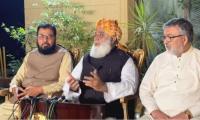ISLAMABAD: Balochistan, the area-wise largest province, has recorded 545,0572 registered voters. This is even less than the number of registered voters in the Lahore district, that has a tally of 701,9245 voters, as per the latest data recently released by the Election Commission of Pakistan (ECP).
According to an analysis of ECP statistics, out of the total registered voters in Balochistan, there are 305,6775 males and 239,3797 females, bringing the gender difference to 662,978. This population-wise smallest province comprises 36 districts and is home to 1,000,000 voters. This is unlike many other districts of the three provinces, which have well over one million voters, particularly in Punjab. While Balochistan’s provincial capital, Quetta has a maximum of 863,453 voters, showing 123,625 as a gender difference. In contrast, male voters stand at 493,539 and females at 369,914, Harnai remains the smallest district with only 47,001 registered voters, of which 25,776 are males and 21,225 females, showing a gender gap of 4,551 voters.
Other districts in this province with fewer voters include Sherani with 48,418 registered voters, Surab with 62,168 voters, Dukki with 65,391 voters, Washuk with 67,671 and Kharan with 68,703 voters. Quetta district is followed by district Pishin with 321,394 voters, Khuzdar with 304,808, Kech with 271,830 voters and Nasirabad with 242,632 respectively. No other district in the province consists of voters in the range of 200,000 voters.
However, there are 19 other districts, having over 100,000 voters. They include Chaman with 196,417 voters, Kila Abdullah with 166,466 voters, Zhob with 151,077, Kacchi with 149,321, Usta Muhammad with 146,541, Hub with 142,384, Gwadar with 141,018, Lasbela with 139,528, Mastung with 139,392, Dera Bugti with 139,052, Kila Saifullah with 128,725, Panjgur with 125,186, Chagai with 124,857, Sohbatpur with 117,808, Sibi with 115,263 and Kalat with 109,168 voters.
Sindh province’s mega city Karachi is divided into seven districts and the collective strength of registered voters here is a staggering 9,390,333voters. Karachi Central is the largest district with a voter database of 2,166,820, including 1,163,885 males and 1,002,935 females. In contrast, the gender gap is nominal 160,472, followed by Karachi East with 1,700,446 voters, Korangi with 1,528,817 voters, Karachi South with 1,284,625 voters, Keamari with 902,922 voters and Malir with 838,773 voters.
Awami National Party chief Senator Aimal Wali Khan was first speaker to raise the matter
Information desks have been set up at universities and scholarships will be awarded to students in 68 disciplines
Court further directed that after transfer of the money, the account should be closed
A new notification has been issued by the Establishment Division in this regard
IHC also ordered that relevant officer of interior ministry to appear in person at next hearing
Few candidates appeared for interview before selection board headed by Federal Minister of Science and Technology







